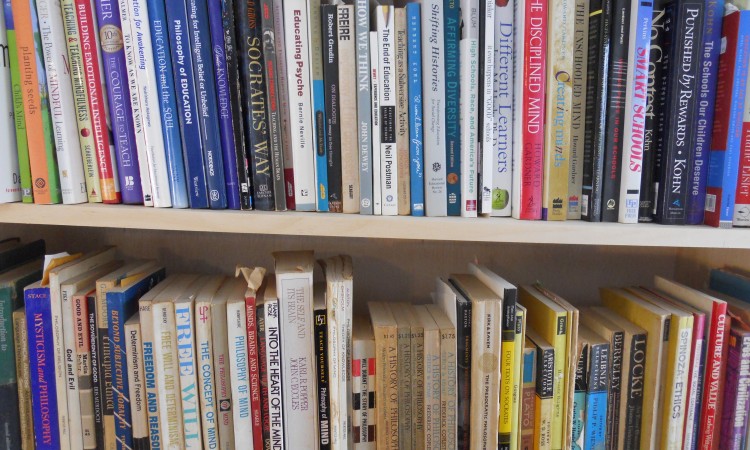I just realized two startling parallels, one between two psychology experiments, one between these experiments and so-called educational reform in the United States. The realizations started last week, when I introduced in my blog the possibility of discussing, in a secondary school classroom, the question: If humans are (or can be) compassionate, why is there so much human-caused suffering and hurt in the world?
Maybe you have heard of the “obedience experiment” carried out by Stanley Milgram in the early 1960s, just after the beginning of the Eichmann trial. In that experiment, a volunteer was tasked to play a teacher to help educate a student learn word pairs. Each time the “student” replied with the wrong word, the “teacher” gave him negative feedback in the form of an electric shock. The voltage of the shock was increased with each wrong answer. The “teacher” sat in one room before an electronic control panel and could see through a window into another room where the “student” sat hooked up to wires. A white coated experimenter stood in the room with the “teacher” encouraging and instructing with comments like, ”Continue using the 450 volt switch for each wrong answer. Continue, please.” The experimenter repeated these instructions even as the “student” began to scream and later dropped over, silent. The “teacher” raised objections; but as the instructions continued, the “teacher” continued with the shocks. The student was an actor; the shocks to the “student” were not real. However, the effect on the “teacher” was real.
It was initially reported by Milgram that 65% of the “teachers” actually continued to shock their students even to a lethal level. But according to researcher Gina Perry, that statistic was only true with one of the 24 versions of the experiment. There were over 700 people involved in the experiments, and the 65% represents only 26 people. There were some variations of the experiment where no one obeyed the authority.
The philosopher Jacob Needleman studied the visual recordings of the experiment and commented on the facial expression and speech of one of the “teachers.” When questioned just after the experiment was over the “teacher” said, “I don’t like that one bit. I mean, he [the “student”] wanted to get out and we just keep throwing 450 volts…” The teacher was dazed and under further questioning couldn’t let himself comprehend what he had done. He couldn’t comprehend his own feelings or allow himself to feel what the “student” might have felt.
A startling parallel to Milgram was a series of experiments by Daniel Batson who tested whether people would act compassionately to save others from suffering. In one experiment, volunteer subjects, like Milgram’s teachers, watched people receive shocks when they incorrectly answered a memory task. The volunteer was then told the person they were watching had suffered trauma as a child. The subject was given the choice to leave the experiment or receive the shock intended for the supposed trauma victim. Many subjects who later reported they felt compassion for the other person volunteered to take on their pain.
What is the message of these experiments? The first is often considered a revelation of the potential for evil in all of us. It is argued that the evil arises from our propensity to obey authority despite clear evidence of the wrongness of the act. I question that interpretation to some degree. The psychologist Philip Zimbardo talks about the “fundamental attribution error” which is a failure to recognize just how much other people and the context influence our behavior. He says that we tend to overestimate the role played by people’s disposition or personality and underestimate the power of a situation. It is not just the authority figure that people follow but the whole situation. Our understanding of who we are and what is real and possible is formed in tandem with our understanding of our situation with others. If other people, in this case the experimenter, act as if the only important factor in the situation is whether the “student” answers correctly, not their physical well being, then it is less likely that the “teacher” would act compassionately. The second experiment demonstrates that even one biographical detail can allow us to identify with another person and act compassionately toward them.
I think we all need to consider that we are possibly participating in a form of these experiments right now. We teachers are being asked to give standardized tests to students. (In fact, such tests began last week.) The state and federal government and local school boards are saying to us that these tests serve valuable educational purposes. They supposedly improve education and make it more equitable by revealing poor schools and poor teachers. But these claims are highly questionable. As I documented in an earlier blog, no standardized test has ever helped create equity. There is no research to show that a student from a school who undergoes standardized testing will do better in college or in a job than one who never took a standardized test. Teachers can see in their classrooms the negative shocks administered by the tests. The tests and test preparation take time from valuable instruction and cause anxiety. They undermine the trusting relationship between teachers and students by turning the motivation to learn from a natural joy in learning to a fear of negative judgment.
So, what will any of us do? Will teachers and administrators obey the authority and administer the “shocks”? Or refuse? Parents can “opt out” and not allow their children to be tested. However, if teachers “opt out” they can face the possible loss of their jobs. What else can be done? What will you do?










